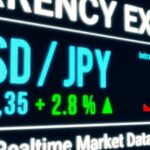Bullish Recovery Amid Cautious Optimism
Gold price (XAUUSD) is back on the rise in early Wednesday trading, recovering modestly after a pullback from its recent four-week high. Hovering comfortably above the key psychological level of $3,350, the yellow metal benefits from sustained safe-haven demand, underpinned by multiple overlapping catalysts—including Federal Reserve rate cut expectations, renewed trade tensions, geopolitical uncertainties, and fiscal instability in the US.
Despite Tuesday’s robust US economic data, the US Dollar struggles to extend its recovery, which in turn supports gold’s positive bias. The growing market conviction that the Fed will lower interest rates this year continues to weigh on bond yields and limit greenback gains, making non-yielding assets like gold more attractive in the current macro environment.
Rate Cut Bets Strengthen as Inflation Eases
One of the primary tailwinds for gold remains the shifting outlook on US monetary policy. Investors are increasingly convinced that the Federal Reserve will opt for at least two 25-basis-point rate cuts before the end of 2025. This dovish pivot comes amid signs that inflation is gradually cooling, allowing the central bank more room to maneuver without fear of reigniting price pressures.
Tuesday’s comments from Atlanta Fed President Raphael Bostic underscore this cautious yet increasingly accommodative stance. While Bostic emphasized patience and reiterated that core inflation remains sticky, he also acknowledged the possibility of a single rate cut later this year depending on how incoming data evolves. His cautious optimism was echoed by other Fed officials, including Chicago Fed President Austan Goolsbee and Board member Lisa Cook.
Fed Officials Weigh Trade Risks and Economic Outlook
While Bostic focused on inflation and recession probabilities, Goolsbee and Cook directed their attention to the potential economic fallout from escalating tariffs. Goolsbee flagged a possible lag in how new tariffs might show up in macroeconomic indicators. Meanwhile, Lisa Cook delivered a more sobering assessment, warning that the current trade policy trajectory could lead to stagflation—a toxic mix of slowing growth and rising inflation. She stressed that tariffs are already dampening economic activity and could complicate the Fed’s task of achieving its 2% inflation target.
This divergence in tone among Fed policymakers reflects a delicate balancing act: easing policy just enough to support growth without reigniting inflationary pressures, all while navigating the unpredictable terrain of trade politics.
Geopolitical and Trade Risks Keep Gold Supportive
Beyond monetary policy, a growing list of geopolitical and trade-related concerns is also lending support to gold. Investors are anxiously awaiting a scheduled call between US President Donald Trump and Chinese President Xi Jinping, expected to take place on Friday. The conversation is widely anticipated amid renewed fears of a full-blown trade war between the world’s two largest economies.
Tensions have escalated rapidly in recent days, fueled by the implementation of new import tariffs on steel and aluminum, which doubled from 25% to 50% starting Wednesday. These developments have reintroduced a trade risk premium into the market, boosting demand for safe-haven assets like gold.
Fiscal Uncertainty Weighs on the Greenback
Another bearish factor for the US Dollar and by extension, bullish for gold is growing concern over America’s fiscal health. Analysts warn that President Trump’s flagship tax cuts and spending packages could widen the US budget deficit at a much faster pace than previously projected. With the country already grappling with a national debt exceeding $34 trillion, fears of fiscal slippage are adding downward pressure on Treasury yields and the greenback.
While markets have largely shrugged off deficit worries in recent years, the combination of ballooning expenditures, aging demographics, and potential economic slowing could soon bring these issues to the forefront, especially if bond investors begin demanding higher yields to compensate for growing risk.
Labor Market Resilience Offers Mixed Signals
The latest JOLTS (Job Openings and Labor Turnover Survey) data released Tuesday added another layer of complexity to the Fed’s policy dilemma. The report showed job openings rose to 7.39 million in April exceeding both forecasts and the previous month’s print of 7.2 million. The numbers suggest continued resilience in the US labor market, a potential counterweight to dovish policy arguments.
However, this strength has not translated into significant wage inflation or overheating fears. In fact, stable job growth alongside declining inflation offers the Fed more leeway to consider rate cuts without triggering runaway price increases. This unique combination—solid employment with easing inflation—is historically rare and creates an ideal backdrop for gold prices to thrive.
Upcoming Data Could Fuel Fresh Volatility
Market participants are now looking ahead to several key economic releases and events that could inject new volatility into the gold market. On Wednesday, traders will parse the US ADP private-sector employment report and the ISM Services PMI for further clues about the health of the labor market and broader economy. However, the main focus remains squarely on Friday’s Nonfarm Payrolls (NFP) report—a critical data point that could make or break expectations for Fed easing.
Additionally, multiple Fed officials are scheduled to speak this week, including those with voting rights on the FOMC. Their comments will be closely scrutinized for any shift in tone or guidance regarding future monetary policy, especially in light of growing global uncertainties.
Equity Markets Reflect Cautious Optimism
Interestingly, the generally positive tone in global equity markets suggests that risk appetite remains intact despite rising trade and geopolitical concerns. This could cap gold’s upside in the short term, especially if stocks continue to push higher on optimism about central bank support and stable corporate earnings.
Nevertheless, the resilience of gold—despite risk-on sentiment in equities—indicates that investors are hedging their bets and maintaining exposure to safe-haven assets in anticipation of potential shocks.
Technical Analysis: Gold Bulls Eye $3,375 Resistance
From a technical perspective, the gold price remains in bullish territory. XAU/USD has reclaimed the $3,350 level, which now serves as immediate support. Sustained strength above this mark could open the door for a retest of the recent multi-week high near $3,375. A break above this level would expose the next psychological barrier around $3,400.
On the downside, initial support lies at $3,330, followed by the 50-period EMA near $3,310. A decisive drop below these levels would negate the bullish setup and shift the near-term bias in favor of sellers.
Momentum indicators, including the RSI and MACD, continue to support the bullish outlook, though overbought conditions could prompt some consolidation before the next leg higher.
Conclusion: Gold Holds Strong as Uncertainty Reigns
Gold’s persistent strength above $3,350 underscores the market’s unease about the global economic and political outlook. While the US labor market remains robust, expectations of Fed rate cuts, fiscal instability, trade policy shifts, and geopolitical tensions are keeping investors on edge.
The yellow metal’s allure as a store of value continues to shine in an era of complex, overlapping risks. As traders await pivotal US data and the high-stakes Trump-Xi call later this week, gold remains well-positioned as a hedge against both economic missteps and policy surprises.
[faq-schema id=”39746″]









